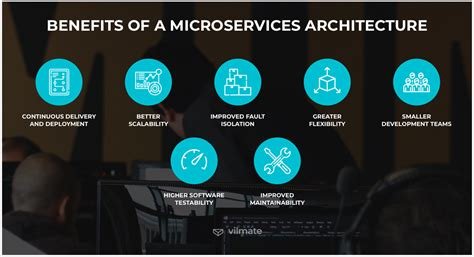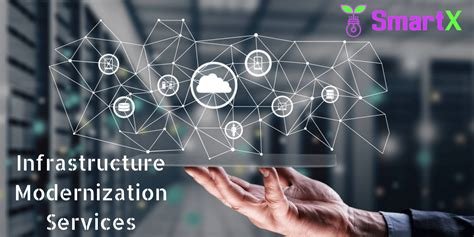In the digital age, understanding the importance of API ecosystems is crucial for modern software development. This blog post delves into key components that form an effective API ecosystem, such as protocols, tools, and governance. It highlights how organizations can leverage these ecosystems for innovation, enabling seamless integration and enhanced functionality across applications. Additionally, best practices for managing API ecosystems are discussed, ensuring stability and scalability while fostering collaboration among different services. The conclusion emphasizes that the future of software development lies in the strength of API ecosystems, positioning them as vital to achieving business objectives and ensuring competitive advantage.
The Importance Of Understanding API Ecosystems
When diving into the realm of modern software development, it is crucial to grasp the importance of API ecosystems. APIs, or Application Programming Interfaces, serve as the backbone of digital interactions, enabling seamless communication between different software solutions. This interconnectedness fosters innovation and accelerates development timelines, which are vital in today’s fast-paced tech landscape. Understanding these ecosystems allows developers and businesses to harness the full potential of their digital architecture.
API ecosystems extend beyond just the individual APIs themselves; they include the entire infrastructure that supports the integration and utilization of these APIs. By understanding how various APIs interact with one another, organizations can create more strategic partnerships, optimize resource usage, and unlock new revenue streams. As businesses pivot to more interconnected architectures, recognizing the importance of API ecosystems becomes increasingly relevant.
- Key Advantages Of API Ecosystems
- Enhanced Collaboration: APIs create opportunities for collaboration between teams and organizations.
- Faster Development: Streamlined integrations expedite the software development process.
- Scalability: Businesses can add or modify services without overhauling existing systems.
- Innovation: Discovery of new functionalities through various APIs fosters creativity.
- Cost-Effectiveness: Utilizing existing APIs can significantly reduce development costs.
- Market Responsiveness: Rapid adaptation to market changes becomes feasible.
In addition to these advantages, understanding API ecosystems can dramatically improve software quality. As developers interact with various APIs, they can continuously refine and enhance their applications, resulting in more robust, user-friendly solutions. Furthermore, as digital transformation accelerates, businesses that fully grasp the importance of API ecosystems are better positioned to leverage technological advancements and maintain a competitive edge.
Key Components Of An API Ecosystem
The Importance of a well-structured API ecosystem cannot be overstated in today’s software development landscape. It serves as the backbone for interoperability between various applications and services. By enabling seamless communication, an API ecosystem can significantly enhance collaboration and innovation within tech environments. Organizations that invest in understanding the vital components of their API ecosystem stand to gain a competitive edge, ensuring their services remain relevant and efficiently integrated.
Essentially, the success of any API ecosystem hinges on several key components. These components work in tandem to foster a robust environment that can support extensive integrations and innovations. By recognizing and implementing these components, businesses can maximize the value derived from their APIs, speeding up development cycles and improving user experiences.
Essential Elements In API Development
- API Design: Prioritize clear and effective design for ease of use.
- Documentation: Provide comprehensive documentation to facilitate understanding.
- Security: Implement strong authentication and authorization protocols.
- Versioning: Maintain backward compatibility through effective version control.
- Monitoring: Utilize monitoring tools to track performance and usage.
- Support: Establish dedicated support channels for user assistance.
- Feedback Loop: Create mechanisms for receiving user feedback to drive ongoing improvements.
In exploring the critical components of an API ecosystem, it’s also vital to consider the different types of APIs available. Each type serves specific purposes and facilitates various integrations, further enriching the ecosystem. This understanding allows developers and organizations to tailor their approach, ensuring that they leverage the right APIs for their particular needs.
Common API Types
There are numerous types of APIs, each designed to address specific functionalities and integration needs. REST APIs, which operate over HTTP, are popular for their simplicity and efficiency. SOAP APIs are another option, offering a protocol that ensures message integrity and security. GraphQL APIs allow clients to request only the data they need, improving performance and flexibility. By selecting the appropriate type, businesses can optimize their API ecosystems for better performance and user satisfaction.
Integration Best Practices
When integrating APIs into existing systems, it’s crucial to adhere to industry best practices. This includes ensuring that all APIs are properly documented, thoroughly testing integrations, and implementing robust error handling mechanisms. Additionally, using standardized protocols can greatly improve compatibility and reduce friction during the integration process. By focusing on these best practices, organizations can streamline their API ecosystem, making it more resilient and easier to manage.
How To Leverage API Ecosystems For Innovation
In today’s rapidly evolving technological landscape, recognizing the importance of API ecosystems is crucial for companies aiming to foster innovation. These ecosystems enable developers to access various services and functionalities, facilitating rapid deployment and scalability. By tapping into this resource, businesses can not only streamline their development processes but also create significant value for their customers.
One of the key elements in successfully leveraging API ecosystems is understanding the specific business needs. Companies must assess their objectives and determine how APIs can play a role in achieving them. This awareness allows businesses to select the right APIs and integrate them effectively within their existing operations, leading to enhanced collaboration and increased efficiency.
Steps To Implement API Solutions Effectively
- Assess your business objectives and identify areas for improvement.
- Research and select the most suitable APIs for your needs.
- Design a strategy for integrating APIs into your existing system.
- Ensure scalability and security of API solutions.
- Conduct thorough testing to identify potential issues.
- Launch the API solution and monitor its performance.
- Continuously optimize and upgrade the API integration as needed.
Another essential aspect is adapting API solutions based on feedback and evolving industry standards. Adapting APIs ensures that businesses remain competitive and can address unforeseen challenges. Moreover, embracing flexible API architectures allows for greater innovation, enabling teams to respond quickly to market trends and customer feedback.
Innovation thrives in an environment where API ecosystems are fully utilized, creating limitless opportunities for growth.
Best Practices For Managing API Ecosystems
Effective management of API ecosystems is crucial for organizations looking to maximize the potential of their technological investments. Embracing the importance of API management can enhance collaboration, streamline processes, and foster innovation. By adopting best practices, businesses can ensure their APIs are efficient, secure, and easy to integrate with existing systems. The management of APIs should not be seen as a one-time task but rather as an ongoing strategy that evolves with the changing technological landscape.
To achieve successful API management, it is essential to create a well-defined governance structure. This involves setting standards for API development, including documentation, versioning, and security policies. Additionally, enforcing consistent API usage within your organization can lead to improved compliance and performance. Organizations must also prioritize monitoring and analyzing API usage, which provides insights into performance metrics and user engagement.
Recommended Tips For Successful API Management
- Establish clear governance policies to standardize API development.
- Implement robust security measures, including authentication and authorization protocols.
- Provide comprehensive documentation to facilitate easier integration for developers.
- Monitor API usage and performance metrics regularly for optimal functioning.
- Encourage feedback from users to continuously improve API offerings.
- Ensure scalability based on user demand and technological advancements.
- Foster collaboration between teams to leverage cross-functional expertise.
Furthermore, maintaining open communication channels with stakeholders, including developers and end-users, is vital for achieving success in API ecosystems. By integrating feedback, organizations can identify gaps and areas for improvement, enabling them to refine their APIs. It’s essential to recognize that the importance of APIs extends beyond simple data exchange; they are critical components that can drive business strategies and open new revenue streams. The continuous assessment of API effectiveness will ultimately contribute to a more resilient and adaptive API ecosystem.
Conclusion: The Future Is In API Ecosystems
As we reflect on the evolving landscape of software development, it’s evident that the importance of API ecosystems cannot be overstated. They form the backbone of modern digital experiences, enabling seamless integrations that empower organizations to innovate faster and more efficiently. By harnessing the power of APIs, businesses can create a flexible architecture that adapts to changing market dynamics and user needs, ultimately driving growth and enhancing customer satisfaction.
The rise of API ecosystems emphasizes collaboration and interoperability, making it essential for developers and organizations to prioritize these elements in their projects. As companies increasingly rely on diverse third-party services and microservices, having a well-defined API strategy is critical. This approach not only facilitates seamless integration but also enhances scalability, allowing businesses to respond promptly to user demands and technological advancements.
- Actionable Takeaways For Teams
- Invest in developing a robust API management strategy.
- Encourage cross-functional collaboration to enhance integration efforts.
- Focus on building user-friendly documentation for APIs.
- Implement regular audits to assess the performance and security of API endpoints.
- Stay updated with emerging technology trends in cloud-based solutions.
- Foster a culture of innovation that embraces API experimentation.
In conclusion, the forward momentum of API ecosystems is a testament to their transformative power in software development. By recognizing and embracing the importance of these ecosystems, organizations position themselves for long-term success and innovation. The future may very well belong to those who can leverage these connected systems effectively, making adaptability and collaboration paramount in their strategic planning.
Frequently Asked Questions
Why are API ecosystems important for modern software development?
API ecosystems are crucial in modern software development as they enable seamless integration, promote collaboration among developers, and facilitate the creation of innovative applications by allowing different software systems to communicate effectively.
What should developers understand about API ecosystems?
Developers should understand that API ecosystems encompass not just the APIs themselves, but also the tools, protocols, and platforms that support API interaction. A deep understanding allows for better design and utilization of these interfaces to maximize their potential.
What are some key components of an API ecosystem?
Key components of an API ecosystem include API gateways, documentation, API management tools, and developer portals. These components work together to enhance security, facilitate use, and provide a robust framework for API deployment.
How can businesses leverage API ecosystems for innovation?
Businesses can leverage API ecosystems for innovation by using open APIs to foster collaboration with third-party developers, encouraging the creation of new applications, and integrating with existing solutions to provide enhanced functionalities.
What best practices should be followed in managing API ecosystems?
Best practices for managing API ecosystems include maintaining clear documentation, implementing robust security measures, monitoring API usage, and fostering ongoing communication within the developer community to gather feedback and drive improvements.
What role do APIs play in digital transformation?
APIs play a pivotal role in digital transformation by acting as the connective tissue between disparate systems, enabling organizations to streamline processes, enhance customer experiences, and innovate rapidly in response to market demands.
How does a strong API ecosystem benefit user experience?
A strong API ecosystem enhances user experience by providing faster, more reliable services that integrate seamlessly with users' existing tools, allowing for personalized interactions and smoother operations across different platforms.
What is the future outlook for API ecosystems in software development?
The future of API ecosystems in software development looks promising, with trends indicating an increase in collaboration and openness. As businesses continue to prioritize digital transformation, APIs will remain central to creating agile, innovative, and interconnected systems.









